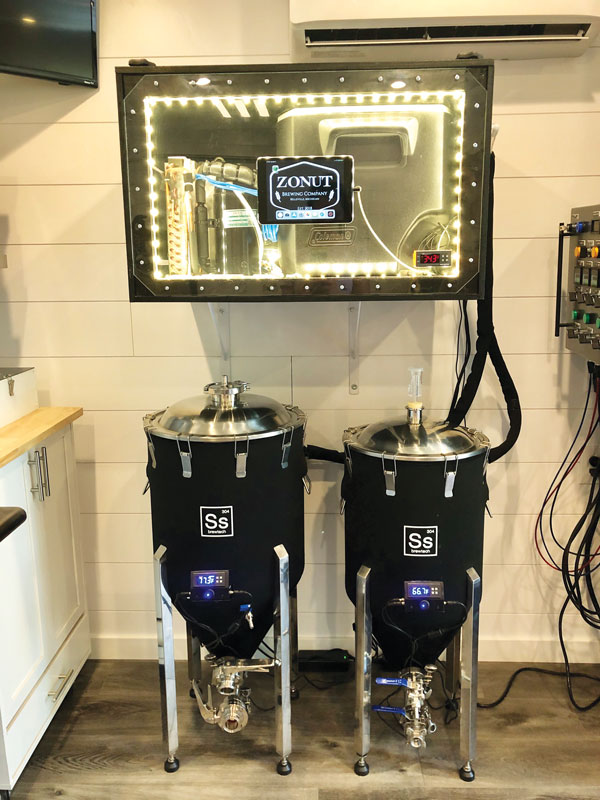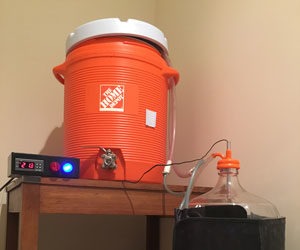Homemade Glycol Chiller

Like everything in homebrewing – the hobby is what you make of it. Want to eke out a few more percentage points of attenuation? How about lagering right in your fermenter at near-freezing temperatures? Fermentation temperature control is where homebrewers often will exact a little more attention, striving for precision from initial pitch to packaging.
Visit any craft brewery and you’re likely to see large, jacketed fermenters that run a glycol solution through their inner and outer skins. These gems can maintain precise temperature control at the touch of a button. Oh the jealousy as a homebrewer! But is it really just a dream to have that kind of control? The simple answer is – absolutely not! With the flood of sophisticated homebrew fermenters on the market, each with their own cooling coils, and heating jackets; precise temperature control of these beauties is only a portion of your paycheck away. (Well, hopefully a portion!).
But now, how to control the cooling? After all, unless you’re an exclusive kveik yeast user, cooling is the most important aspect of maintaining precise temperature throughout fermentation. Sure, you can fill a cooler full of ice bottles and exchange daily until you’re ready to package. Is that really what you want to do after shelling out the dough for your dream fermenter? There are better ways! In this article we will show you how to make your own glycol chiller with the capacity to control many fermenters at once down to near-freezing temperatures for as long as you desire. And the best part: You can do this for a small fraction of the cost of a pre-built unit.
An air-conditioning system functions off a basic principle of physics that when a substance is converted from a liquid to a gas (known as phase change) heat is absorbed.
An air-conditioning system functions off a basic principle of physics that when a substance is converted from a liquid to a gas (known as phase change) heat is absorbed. A refrigerant is used with specific properties to exploit the phase change and maximize this heat absorption. When deconstructing any mechanical refrigeration system, there are two heat exchangers, a compressor, and an expansion valve. The evaporator is the heat exchanger on the “cold” end of the cycle that converts from liquid to gas and absorbs heat from the area around it. Instead of blowing air over the evaporator, as home air conditioners typically do, the evaporator can be placed into a bath of glycol where it absorbs heat energy from the glycol bath and lowers its temperature. The second heat exchanger, the condensing coil, is used to move heat energy from the hot, liquid refrigerant exiting the compressor to the external environment before the liquid refrigerant is expanded to a gas in the evaporator coil. This is done outside of the glycol bath.
To construct a glycol chiller we will start with a standard “window” A/C unit and modify it to allow the evaporator to be placed in a glycol bath. This bath will serve as a cold liquid source to pump into your chilling coil.
Tools and Material
- 5,000 BTU window A/C unit
- 40–60-qt. (37–57-L) cooler
- Inkbird ITC-1000F controller
- Aquarium wave pump (~500 gph)
- Enclosure: Wood, plywood, plexiglass, fasteners, and paint.
- 14-gauge minimum wire
- (2) 120V duplex outlets, switches, wire nuts
- 1 can expandable pond foam
- 3 ft. (0.9 m) of ½-in. (13 mm) pipe insulation
- 5 gal. (19 L) propylene glycol with rust inhibitor
- 5 gal. (19 L) distilled water
- Optional: Tablet display with power cord, LED lights, etc.



